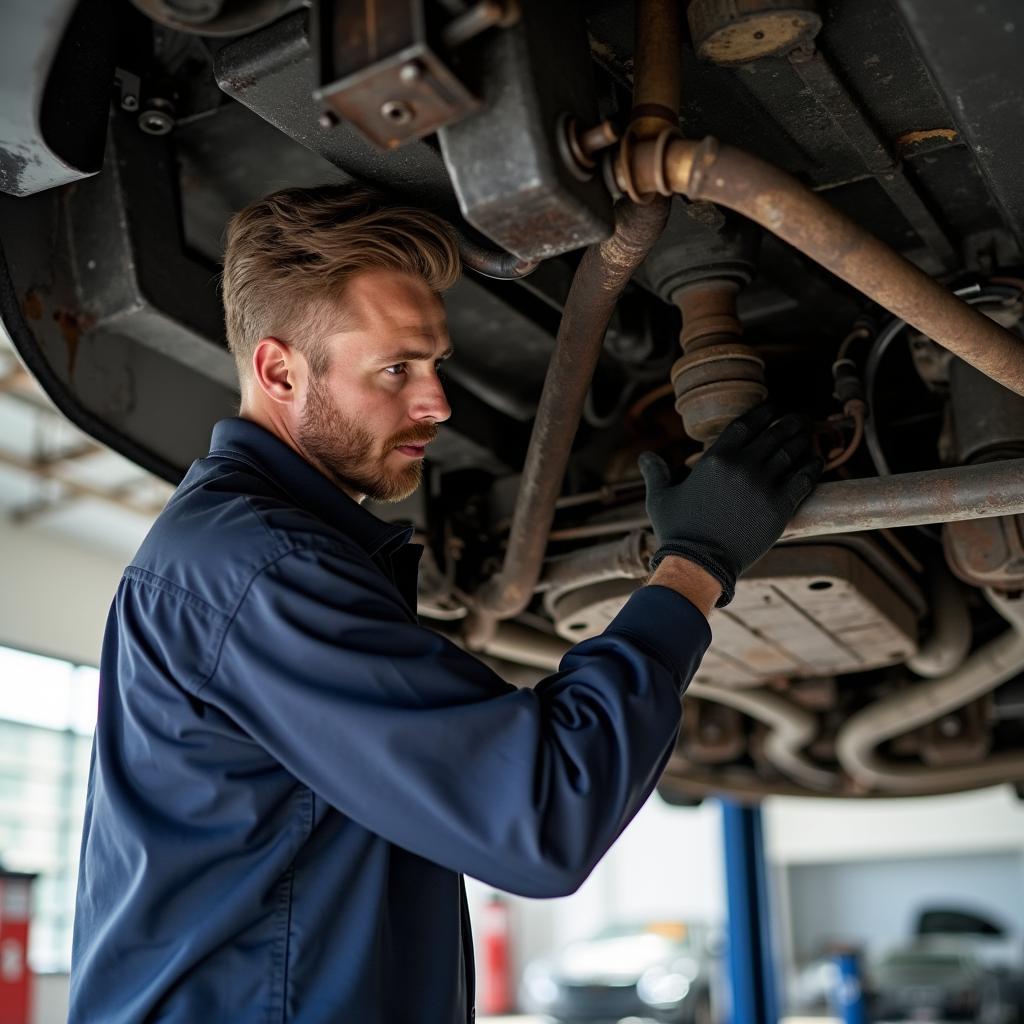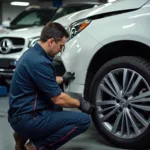Understanding the intricacies of car damage can be daunting. Whether it’s a minor fender bender or a more serious collision, knowing what to look for and how to proceed with Car Damage Servicing Inspection is crucial. This guide provides you with all the information you need to navigate the process confidently.
Why is a Car Damage Servicing Inspection Important?
After any incident involving your vehicle, a thorough car damage servicing inspection is non-negotiable. It’s not just about the visible damage; often, hidden issues can lead to costly repairs down the line.
Here’s why a comprehensive inspection is essential:
- Safety First: Hidden structural, electrical, or mechanical damage can compromise the safety of your vehicle for both you and other drivers.
- Accurate Repair Estimates: A detailed inspection ensures that all damage is identified, allowing for accurate repair estimates and preventing surprises later.
- Insurance Claims: A professional inspection report serves as valuable documentation for insurance claims, supporting your case and ensuring a smoother process.
- Resale Value: Addressing all identified damage, both visible and hidden, helps maintain the resale value of your vehicle.
What to Expect During a Car Damage Servicing Inspection
A professional car damage servicing inspection involves a systematic approach to assess the full extent of damage. Here’s what a qualified technician will typically examine:
-
Visual Examination: The inspection begins with a thorough visual assessment of the vehicle’s exterior and interior. This includes checking for dents, scratches, broken glass, deployed airbags, and any signs of fluid leaks.
-
Mechanical Inspection: The technician will then inspect the vehicle’s mechanical components. This includes examining the engine, transmission, brakes, suspension, and steering system for any signs of damage or malfunction.
-
Electrical System Check: The vehicle’s electrical system is thoroughly inspected, including the battery, wiring, lights, and electronic control units (ECUs), to identify any faults or damage.
-
Frame and Structural Integrity: Checking the vehicle’s frame and structural integrity is critical. This involves inspecting the unibody for any bends or misalignment, ensuring the vehicle’s structural integrity hasn’t been compromised.
-
Diagnostic Scanning: Modern vehicles rely heavily on electronics. A diagnostic scan using specialized equipment helps identify any underlying issues within the vehicle’s computer system, often revealing hidden problems.
Choosing the Right Professional for the Job
Entrusting your vehicle to the right professionals is crucial. When selecting a car damage servicing inspection provider, consider the following factors:
- Certifications and Experience: Look for certified technicians with experience in collision repair and damage assessment.
- Reputation and Reviews: Check online reviews and ask for recommendations to gauge the reputation and reliability of the service provider.
- Equipment and Technology: Ensure the provider utilizes up-to-date equipment and technology for accurate diagnostics and comprehensive inspections.
- Transparency and Communication: Choose a provider that offers clear communication, detailed inspection reports, and transparent pricing.
Don’t Underestimate the Importance
A car damage servicing inspection is an essential step after any accident or incident involving your vehicle. By investing in a thorough inspection, you prioritize safety, ensure accurate repair estimates, strengthen insurance claims, and protect your vehicle’s value. Remember, a comprehensive understanding of the damage is the first step towards a safe and successful repair journey.


